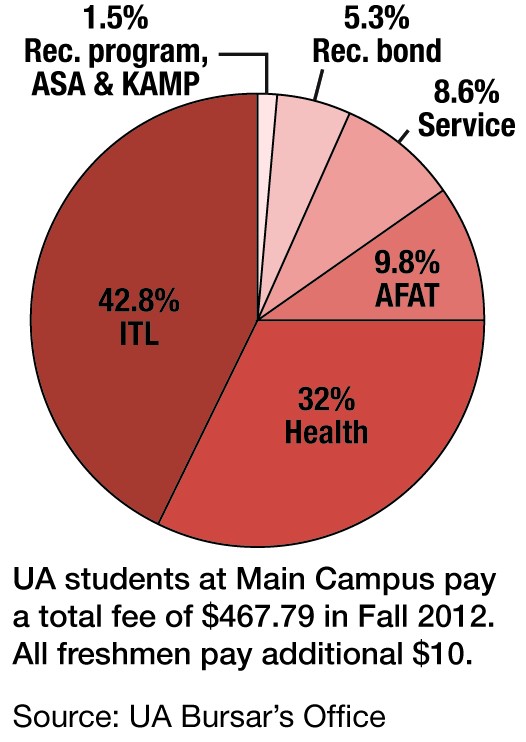Since being elected Graduate and Professional Student Council president in May, Zachary Brooks has been pushing for student-fee transparency to clearly explain what the $467.79 tacked on to most students’ tuition actually pays for. Graduate and undergraduate students who take 7 units or more are paying the highest amount of fees for Arizona Financial Aid Trust, the Student Recreation Center and Student Services, according to data on the bursar’s office website. The fees fund services around campus such as Wifi access, counseling and psychological services and enhanced food options.
To increase the transparency of such fees, Brooks said he plans to work with Jim Van Arsdel, the assistant vice president of student affairs and adviser for the Student Services Fee Advisory Board. Both plan to work with the bursar’s office to “make sure that when someone goes to UAccess and looks at their account, that’s where they can see how the fees are broken down,” Brooks said.
GPSC plans to push for unbundling the Information Technology/Library fees, which allocate $200 to wireless access and digital library materials. By unbundling these fees, students can see exactly how much is going to Wifi access and how much is going to digitally accessed articles and journals for the library.
Brooks added that because some students find University Information Technology Services less useful as others, one fix is to unbundle them, allowing students to vote for only the ones that benefit them.
GPSC also plans to unbundle the Health fee, which goes toward student health services such as counseling and psychological services, as well as operational and maintenance costs for the Rec Center. Doing so would allow students to know exactly how much money goes to which area.
“If we pay 150 dollars, we should know $100 goes to one pot of money and $50 to a different pot,” he said.
Brooks added that keeping the fees bundled also requires that students vote on a number of fees even if they’re only concerned about one fee in the entire bundle.
Most fees were put into place as of 1990 or later in result of student referendums. With recent cuts to the higher education budget and no chance of eliminating any of the fees altogether, Brooks said that clarifying the fees is the next best option.
“Talking to administrators about the finances, it’s clear that the state of Arizona has cut 21 percent of our budget for higher education since 2008, so there’s just less money,” Brooks said. “It’s harder to imagine less fees.”









